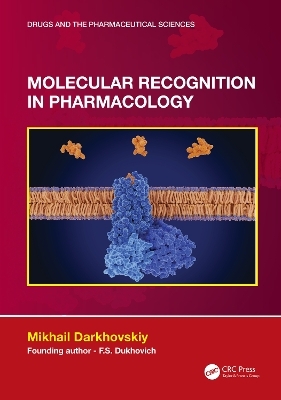
Molecular Recognition in Pharmacology
CRC Press (Verlag)
978-1-032-43108-6 (ISBN)
This unique volume traces the behavior of the drug substance, starting from the initial pre-contact stage, and ending with the formation of the complex. Molecular recognition lies in the foundation of every life form and includes many mysteries. Currently, studies on this topic in pharmacology are limited to determining the properties of complexes of medicinal substances (drugs) with specific (complementary) biomolecules: receptors, enzymes, ion channels etc. The results present the mechanisms preventing drugs from such non-specific binding. This direction is very fruitful, although the phenomenon of molecular recognition is far wider.
Features
Presents the basics of thermodynamics and kinetics of complex formation between ligands and receptors
Selected novel therapeutic concepts are tested and validated
Provides a review of the pharmacophore approach and drug design methods
By its nature, pharmacology is a multi-disciplinary science, hence, disciplinary areas include chemistry, biology and neuroscience
Discusses hot topics including 3D structure determination techniques and in silico methods and neural networks
The main theme of the book is the consideration of mechanisms created by nature to protect physiologically active substances from being stuck on nonspecific acceptors in the body. The book describes the materials that aid in the development of new medicinal substances. It is intended for researchers, as well as upper-level undergraduate and graduate students interested in the problems of molecular pharmacology and drug design.
Mikhail Borisovich Darkhovskiy graduated from Moscow State University in 1996 with a major in Quantum Chemistry. In 2005 he earned a PhD in Chemistry and Solid-State Physics under the supervision of Dr. Andrei Thougreeff. His research was in electronic structure and transformation of spin- isomers of iron and cobalt complexes in spin transitions using the QM/ MM effective crystal field method. Together with Professor Dukhovich, he investigated the factors involved in molecular recognition in “ligand–receptor” systems, the influence of water on complex strength, and conformational entropy as a hidden factor for complex formation. Currently, he works in the biotech startup InterX (a subsidiary of NeoTX company), participating in the development of methods for the accurate prediction of compounds’ binding affinity to proteins. His awards include the INTAS Young Scientist award, and, Emory University Visiting Scientist award (Cherry L. Emerson Center for Scientific Computation Fellowship).
Chapter 1 Energy of Intermolecular Interactions in Drug-Receptor Complex Formation
Chapter 2 Methods for Studying Drug-Receptor Binding
Chapter 3 Methods for Drug Discovery Research
Chapter 4 Thermodynamics of Drug-Receptor Complex Formation
Chapter 5 Effect of conformation entropy on affinity of specific ligands
Chapter 6 Kinetics of Drug-Receptor Complex Formation
Chapter 7 Distant and Contact Interactions of Drugs with Specific and Non-specific Receptors
Chapter 8 Influence of bound water on interaction of the chemical groups in drugs and receptors
Chapter 9 Information Required for Receptor Recognition
Chapter 10 Agonists and Antagonists
Chapter 11. Non-selective Drugs
Chapter 12 Search Paths for Novel Therapeutics
| Erscheinungsdatum | 13.12.2023 |
|---|---|
| Reihe/Serie | Drugs and the Pharmaceutical Sciences |
| Zusatzinfo | 55 Tables, black and white; 4 Line drawings, color; 97 Line drawings, black and white; 4 Illustrations, color; 97 Illustrations, black and white |
| Verlagsort | London |
| Sprache | englisch |
| Maße | 178 x 254 mm |
| Gewicht | 920 g |
| Themenwelt | Medizin / Pharmazie ► Medizinische Fachgebiete ► Pharmakologie / Pharmakotherapie |
| Naturwissenschaften ► Biologie | |
| Naturwissenschaften ► Chemie ► Organische Chemie | |
| Technik | |
| ISBN-10 | 1-032-43108-3 / 1032431083 |
| ISBN-13 | 978-1-032-43108-6 / 9781032431086 |
| Zustand | Neuware |
| Informationen gemäß Produktsicherheitsverordnung (GPSR) | |
| Haben Sie eine Frage zum Produkt? |
aus dem Bereich


